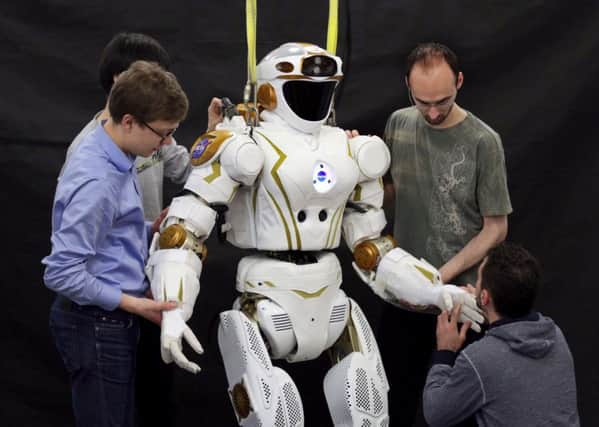Mars-bound humanoid robot built by Edinburgh scientists and Nasa


It is hoped the Nasa android, the only one of its type in Europe and one of only three prototypes in the world, will make the journey to the red planet years ahead of the first human astronauts in order to lay crucial groundwork for their arrival.
Reminiscent of a Star Wars stormtrooper, the 1.8m-tall bionic being has been named Valkyrie after the warrior maidens of Norse mythology.
Advertisement
Hide AdAdvertisement
Hide AdThe automaton has been designed with a humanoid shape so it can work alongside real people or step in to carry out high-risk tasks in their place.
Currently, Valkyrie can walk on two legs and perform basic movements such as holding and manipulating objects.
In a collaboration with Nasa, researchers at the University of Edinburgh will work to give it a more sophisticated set of skills, enabling it to better understand and respond to its surroundings.
Advertisement
Hide AdAdvertisement
Hide AdThey also aim to improve the robot’s handling and walking capabilities by employing sophisticated onboard sensors to help it make sense of its environment and improve manoeuvrability.
The robot’s ability to interact closely and safely with humans and other machines will also be developed.
“Valkyrie is a huge scientific undertaking,” said Professor Sethu Vijayakumar, of the University of Edinburgh’s School of Informatics and director of the Edinburgh Centre for Robotics.
Advertisement
Hide AdAdvertisement
Hide Ad“We are looking forward to tackling the many technical challenges involved in developing a large-scale humanoid robot, and pushing the state of the art in humanoid robotics.”
The first humans are not scheduled to blast off for the fourth planet from the sun until at least 2024.
However, several missions are planned over the next few years to pave the way for the next giant leap for mankind.